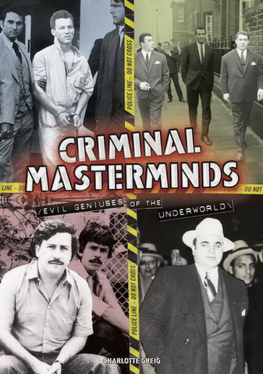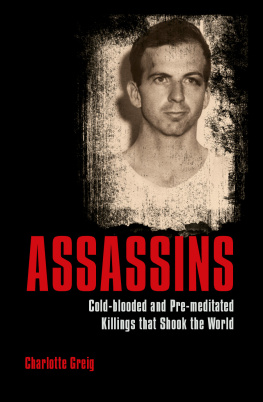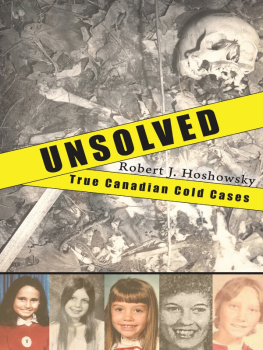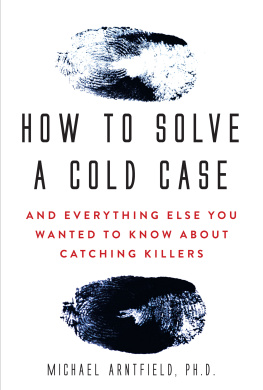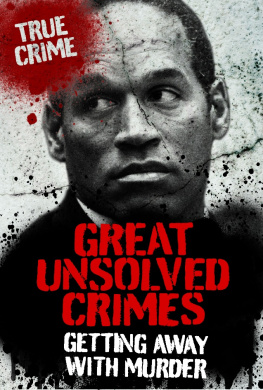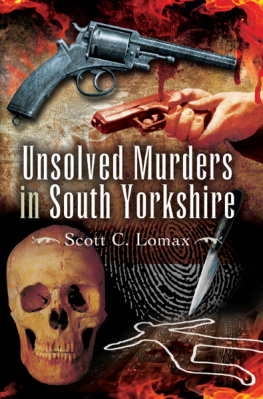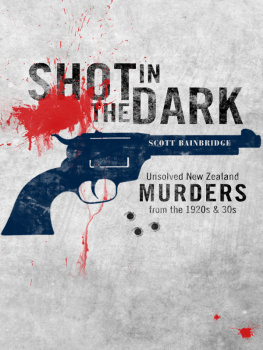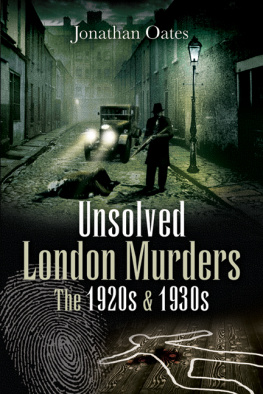All rights reserved. No part of this publication may be reproduced, stored in a retrieval system, or transmitted, in any form or by any means, electronic, mechanical, photocopying, recording or otherwise, without prior written permission in accordance with the provisions of the Copyright Act 1956 (as amended). Any person or persons who do any unauthorised act in relation to this publication may be liable to criminal prosecution and civil claims for damages.
00
INTRODUCTION
TODAY, IN THE WORLDS CITIES, THERE ARE HUNDREDS OF COLD CASES ON THE FILES OF POLICE DEPARTMENTS. THESE ARE THE CASES THAT HAVE GONE UNSOLVED FOR YEARS: CASES WHERE, PERHAPS, THERE WERE NO LEADS; WHERE CLUES THAT SEEMED PROMISING AT FIRST LED NOWHERE; WHERE EVIDENCE WAS LOST, OR WENT UNNOTICED; WHERE, FOR WHATEVER REASON, WITNESSES WOULD NOT COME FORWARD.
S ometimes, according to the nature of the case, there may have been intense pressure at the time from the local community, the media, and the public in general, to solve the crime; in other instances, nobody cared about the victims, and the crime was not reported in the newspapers or on TV until many years later.
Whatever the circumstances, the police usually make every effort to find the perpetrators of serious crimes as quickly as possible; but of course, as in all other walks of life, mistakes are made and bureaucratic systems cause delay. The element of human error also plays a part, whether it is sheer incompetence or emotional bias of some kind. All these factors lead to the same outcome: a file that sits on the shelves of the police department, gathering dust over the years until it has been forgotten.
Yet, in recent years, a growing number of cold cases have been taken down off the shelves, dusted off, reviewed, and finally solved often years, decades even, after the crimes were committed. This book tells the fascinating story of those cases. Here are stories of killers who were tracked down after years of believing that they had, literally, got away with murder. Some of them are famous: for example, Dennis Rader, better known as BTK, the serial killer who signed his taunting letters with the initials that stood for Bind, Torture, Kill, his horrifying method of murder; or Gary Leon Ridgeway, aka The Green River Killer, who was finally tracked down after many years, and is now thought to be Americas most prolific serial killer ever. Other killers are less well known, but no less evil: Danny Keith Hooks, who murdered five prostitutes in a crack house; or Joe Clark, a psychotic teenager who liked to break the bones of younger boys before putting them to death. They, like the others, escaped justice for a long time but, finally, the long arm of the law reached out to them.
Victims stories
The book also tells the story of the victims, as well as the killers: young women like Martha Moxley, whose murder took decades to solve before it was found that the murderer was a young, privileged teenager like herself, living in the gated community of the super-rich at Belle Haven, Connecticut. Or Jill Dando, the British TV personality who was shot dead in an execution-style killing outside her house in a quiet London street. The circumstances of her killing led detectives to believe for a time that it had been politically motivated, but as it transpired, the explanation was simpler than that. She was murdered like so many other female victims by a mentally disturbed, obsessive loner. Similarly, the case of Hilda Murrell, an elderly woman living in the English countryside, caused a political storm when it was suggested that her death was a result of skulduggery among high-ranking figures in the British political elite; however, once again, there was less to the case than met the eye her killer turned out to be an armed robber with no political connections whatsoever.
DNA profiling
Most of the cold cases described in this book were solved by a relatively new method, which has proved more effective than any other in recent years: DNA profiling. Today, in most American states, convicted felons are required to give DNA samples to the police, usually as mouth swabs. Data on these samples is fed into a national database, which is growing ever more extensive as every year passes. Meanwhile, evidence from unsolved past cases, such as blood, semen, and hair samples found on the bodies of victims, are used to make a DNA profile of the perpetrator of the crime. These profiles are fed into the computer and checked against the database.
Reliability
The evidence taken from DNA profiles is extremely reliable: unless it can be proved that samples have been tampered with in some way, there can be no doubt that a DNA match is conclusive. This is because every single individual in the world has their own unique DNA. Moreover, unlike other methods, such as fingerprinting, DNA does not degrade or wear out over time. A sample taken from a corpse many years ago yields the same results as one taken just a few days before. For these reasons, DNA profiling is the single most powerful tool in solving the many cold cases on Americas police department files today. And this looks set to continue. Theoretically, at least, it seems that hundreds of cases could be solved in this way: by matching the DNA profile of an individual on the database to that of samples taken from a victims body as long as evidence containing DNA was kept by the detective team at the time.
Of course, the system is not foolproof. There are many killers who are not on a police database, so that even if their DNA code is known, there is no way of tracing them. Only by matching their code with that of convicted felons on the database can the police track down a murderer. And, of course, not everyone who commits murder, even serial murder, is on the polices books. But sooner or later, most of these crazed individuals come into contact with the law, in some way or other be it only for a small matter such as a speeding fine; and when they do, they find that their past catches up with them, in no uncertain terms.
Other methods to solve cold cases
Crucial as it has proved to be in recent years and promises to be in the future DNA profiling is not the only method that solves cold cases. All across America, there are now specialist units that employ a variety of approaches to solve these difficult crimes. These include the work of Frank Bender, a forensic sculptor. Instead of issuing a sketch of the suspect, police go to Bender, who creates a bust instead. Liaising with detectives, a psychologist, and others, Bender uses his uncanny ability to visualize the appearance of an individual. He uses clues from the killers life, analysing his daily routines, his likes and dislikes, and so on, to build up a picture of what he would look like today. One of Benders greatest triumphs was the case of John List, the oldest, coldest case that had ever appeared on the TV show,

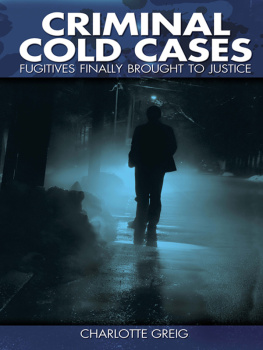
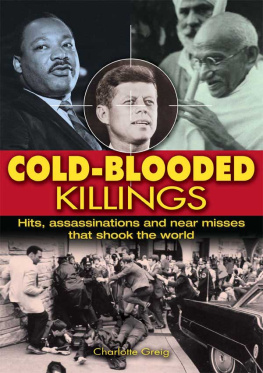

![Charlotte Greig - Evil Serial Killers. In the Minds of Monsters [Fully Illustrated]](/uploads/posts/book/70143/thumbs/charlotte-greig-evil-serial-killers-in-the-minds.jpg)
